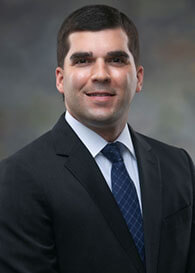
For some men, preparing to watch their favorite college basketball teams duke it out during March Madness includes a comfortable chair, big screen TV, an ice pack and a vasectomy.
“It’s the perfect time to relax at home and have something to do while you are recovering. There aren’t many sporting events like it with back-to-back days of multiple games to watch,” said Alexander Rozanski, MD, a UT Health San Antonio urologist.
Rozanski said he first heard about this phenomenon during his urology residency training. A 2018 study in Urology, a peer reviewed journal, showed the most popular times to schedule the procedure are at the end of the year and in March. More than 500,000 men in the United States opt for the procedure annually.
Rozanski said the timing of a vasectomy during March Madness could help patients follow their doctor’s orders more reliably.
“Sometimes it’s hard to get guys to follow post-vasectomy recovery instructions and make sure they are relaxing and not doing things they shouldn’t like strenuous exercise or activities. March Madness gives them a good excuse to lay low and recover,” he said.

Rozanski said the typical age of men pursuing a vasectomy is in their 30s and 40s. There are men in their 20s or in the 50+ age group that seek out this procedure, but it is less common.
The ease of the procedure makes it an attractive choice for men or couples who want a permanent birth control option. The 10-minute clinic procedure, which includes cutting and sealing the tubes carrying sperm, is less invasive than a female tubal ligation or tube tie. Recovery is typically about a week or less.
“A vasectomy is popular among men and couples because it is a well-tolerated short clinic procedure, meaning the patient does not need to go to the operating room. It has a very low risk of complications, minimal recovery time and an extremely high success rate,” he said. “The risk of pregnancy after a successful vasectomy is approximately one in two thousand, which is much more reliable than a condom, birth control pill or other temporary forms of birth control.”
Rozanski said the procedure could also be a way for couples to share the responsibility of choosing not to have more children.
“I joke with some of my patients and tell them that since their wives have done most of the work leading up to this point with the pregnancies, breastfeeding, etc., now it’s time for the husband to pull their weight,” he said.

